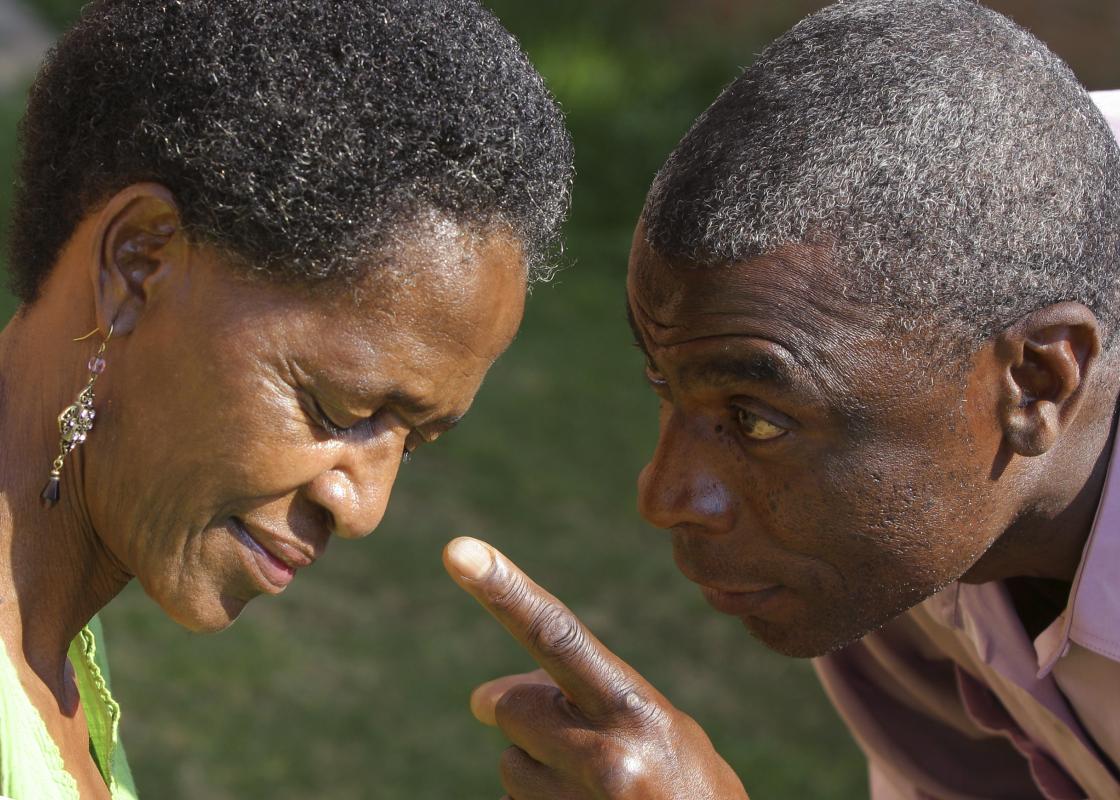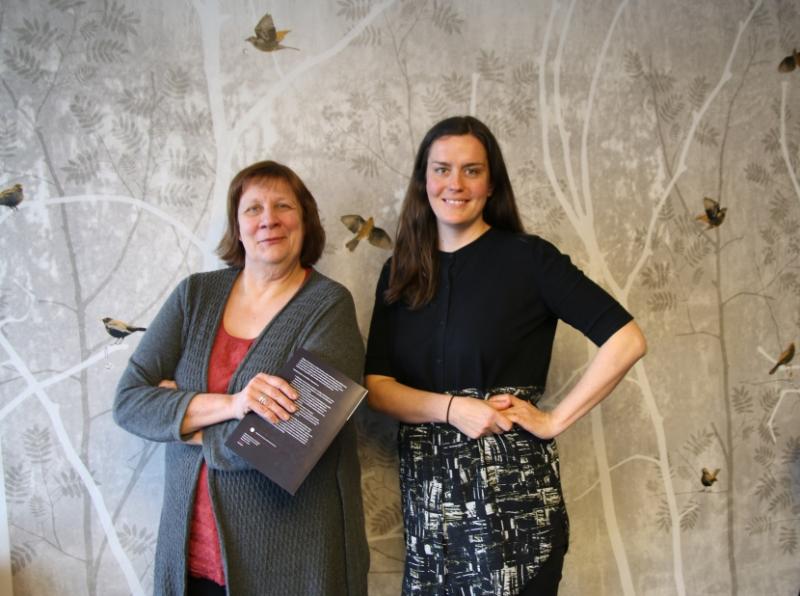“Violence is not gendered simply because men abuse women,” says Hilde Jakobsen.
Gendered violence is a significant topic in her PhD thesis on domestic violence in Tanzania, submitted to the Department of Health Promotion and Development (the HEMIL Centre) at the University of Bergen.
Something is ‘gendered’ if it has to do with gender, as the word implies. Gender is often perceived as biological in accordance with the classical categorisation of men and women. And on a global basis the figures speak for themselves: it is primarily men who abuse women and not the other way around.
According to Jakobsen, who has studied and worked with domestic violence, this perspective characterises a lot of Norwegian research on violence and gender.
“Gender is reduced to something biological, that is, men and women, and then the counting begins. The first find is that men are the primary abusers. Then the researchers find that some women also abuse men. And all of a sudden the violence is no longer gendered, since both men and women abuse.”
The social meaning behind the violence
Jakobsen, however, has found that the gender aspect is expressed in the motivation behind the violence and the effects it is meant to have.
Through her study of domestic violence in Tanzania, it appears that the use of violence against women to keep them in their place is largely accepted in society. Women are expected to look after their husband, their home and their children. And every now and then she needs to be beaten a little in order for her to obey and do what is expected of her.
“In order to say anything about violence and gender, apart from counting men and women who abuse or are being abused, we need to understand gender as theorized in the social sciences, not as biological sex. We need to look at the meaning behind the violence, to what effects it is used and what it sustains.”

According to Jakobsen, violence is gendered if it is supports and sustains gender norms, if it contributes to regulating how people should behave as men and women.
“If you analyse gender from that perspective you may also find that violence against men could be gendered. Or you may conclude that the violence is not gendered. It is not simply determined by whether the abuser is a man or a woman.”
See also: Gender equality reduces violence
Gender blind work against gender-based violence
The topic of her PhD thesis came to her when Jakobsen was evaluating a UN programme against gender-based violence in a refugee camp in East Africa. The descriptions she got of the UN programme and its purpose varied depending on whether she spoke to European employees or local employees from Tanzania.
The Europeans took for granted that everybody agreed that the programme’s vision was to combat violence against women. Their Tanzanian colleagues, however, did not agree that the use of physical violence against women was necessarily a bad thing in itself. According to them, some forms of violence were in fact justified. Both parties knew about the other’s perspective, yet the discrepancy was not discussed.
According to Jakobsen, the European employees regarded the local perception of violence as part of the so-called culture. And with their ideal being to conduct culturally sensitive development aid, they didn’t want to tamper with the local culture.
“They avoided the key issue of gender roles, since they attached the ‘culture’ label to this. But you can’t say that you work with gender-based violence while at the same time refuse to engage with the gender basis of the violence: the idea that women should submit to men,” says Jakobsen.
“You can’t say that you work with gender-based violence while at the same time refuse to engage with the gender basis of the violence: the idea that women should submit to men.”
Suppression of women is not culture
According to Jakobsen, the distinction between us, the Westerners, and they, the Africans, is a construction meant to serve political purposes. Or we, the Africans, versus you, the Westerners.
African politicians may reject feminist ideas as ‘Western intervention’ even if they come from their own people. And Western politicians may claim that what they’re doing is culturally sensitive and apolitical when they avoid engaging with fundamental gender inequalities that need changing if we want to do away with gender-based violence.
“Why is it that it’s the relation between men and women that’s not supposed to be addressed?” Jakobsen asks. “Everything else is subject to change. But I wouldn’t call the suppression of women ‘culture’. Why should it be considered culture when it happens in Africa, while when it happens here we call it gender norms that may be changed?”
“I wouldn’t call the suppression of women ‘culture’. Why should it be considered culture when it happens in Africa, while when it happens here we call it gender norms?”
Between coercion and consent
The statistics in Tanzania suggest that approximately half of the women in the country think a husband is right to beat his wife. This view also emerged in Jakobsen’s research interviews.
“And if the women say this themselves, what right do feminists have to claim otherwise? This simple argument is used all the time,” says Jakobsen.
“Those who address the structural and normative dimensions of violence against women are often accused of being Western feminists or imperialists.”
But it’s not that simple, because there’s no clear line between coercion and consent, according to Jakobsen.
“You don’t necessarily consent simply because you’re not visibly forced. Social phenomena are complex and norms are an important dimension of violence against women.”
See also: Men's violence against women: Not only a question of power
Good and bad violence in Tanzania
Jakobsen’s research is based on 27 group interviews with women and men in the Arumeru and Kigoma-Vijijini districts in Tanzania. And some domestic violence against women is accepted in Tanzania.
She calls the accepted violence ‘The good beating’. Sometimes it is regarded as right and necessary to beat a woman.
The accepted violence is carried out in order to ensure that the woman follows society’s norms of good conduct. She should acknowledge her husband as head of the household and obey him, and she should perform her duties. One instance in which the husband was entirely justified in beating his wife was when she didn’t ensure that the children were always cleaned and fed.
One instance in which the husband was entirely justified in beating his wife was when she didn’t ensure that the children were always cleaned and fed..
A ‘bad beating’ or unacceptable violence, on the other hand, is violence against women who haven’t done anything wrong. Perhaps the food isn’t ready in time because she has to help someone with something, or a duty isn’t performed due to a misunderstanding, unintentionally.
Neither is it ok for men to beat their wives simply because they’re angry or drunk. The violence shouldn’t be random or excessive. It has to be deserved in order to serve as effective punishment. The wife has to have done something wrong for the beating to be acceptable.
Violence that preserves gender norms
“The fact that some violence is considered unacceptable legitimises the ‘good violence’”, says Jakobsen.
“One type of violence may be good if another is considered bad.”
And what regulates the accepted violence is society’s gender norms.
“It is not like this is supported by all hundred per cent of the Tanzanian women I have spoken to. But when they discussed within the focus groups it became clear that there are some self-written rules that they all have to relate to. Everybody agreed that this dominant norm exists.”
According to Jakobsen, the norm often became explicit when someone spoke against it.
“They spoke against a rule that everyone recognised the existence of, and that everyone was expected to conform to.”
Based on this background, Jakobsen claims that the violence is gendered. Not because men beat women, but because the justified violence is intended to keep women in their place and enforce a norm saying that the wife is obliged to carry out certain household chores – a gender norm.
The elephant in the room
It wasn’t easy to get access to these discussions among Tanzanians. Although she has grown up in various African countries, Hilde Jakobsen is nevertheless a white, Western woman.
“It wouldn’t have mattered if I’d been a more fluent Swahili speaker or if I had dressed differently. I am white, and that is beyond my power to change. I could not make them perceive me as non-white. The power difference will always be there.”
In order to prevent the discussions from becoming about what the participants thought the researcher wanted to hear, Jakobsen withdrew from the process and let a tape recorder do the work. According to her, other researches ought to do the same, as she thinks white researchers in Africa often fail to take the effect of their own whiteness seriously.
Good beating in the North?
“What may your research on gender and violence in Tanzania tell us about the same issue here in Norway?”
“I’ve studied the accepted violence. There will always be some types of violence that everyone can agree is bad. Other types of violence have a degree of social acceptance. There’s a continuum between the most accepted and the most condemned violence. I think this also applies to Norway. There’s some violence that Norwegian society more or less agrees is bad. Those who are arrested, who are sent to therapy – when studying these offenders you’re looking at that end of the scale. I think it would be worthwhile to study the violence that is not considered entirely unacceptable in a Norwegian context as well.”
“I’ve studied the accepted violence. There will always be some types of violence that everyone can agree is bad. Other types of violence have a degree of social acceptance. There’s a continuum between the most accepted and the most condemned violence. I think this also applies to Norway.”
According to Jakobsen, unwritten gender norms also define relationships between men and women in Norway. Despite structural progress and legal rights, unwritten norms still assert themselves in ways that make Norwegian couples follow gendered social norms, for instance when it comes to the distribution of housework and care.
“One difference might perhaps be that in Norway certain things remain unsaid, and perhaps there is a lack of awareness as well. Maybe the norms are even more implicit here,” Jakobsen speculates.
“But there is no difference between the West and the rest of the world here. The theories and the scholarly literature I use to explain and understand violence against women, these are just as applicable in Norway as they are in Tanzania.”
“Underdeveloped theories”
According to Jakobsen, arguments saying that men are also victims of domestic violence and that both men and women can be offenders have not been subject to sufficient critical scrutiny in the Norwegian public sphere and within academic circles.
“They are used as evidence to prove that feminists are mistaken when it comes to domestic violence. That it is not about gender and power after all.”
The currently dominant research internationally presents domestic violence as having little to do with gender, according to Jakobsen. The field is also dominated by applied research, for example on ‘what should we do’, ‘how can we help’, and ‘which clinical measures work’.
“Theory on the topic is underdeveloped, especially in Norway. There are no satisfactory theories concerning how these issues actually relate to gender, or concerning the violence’ function in society,” claims the researcher.
“Within the social sciences, Norway lacks feminist research on violence.”
Reference:
Jakobsen, Hilde, The Good Beating – Social norms supporting men's partner violence in Tanzania (2015), University of Bergen.
Translated by Cathinka Dahl Hambro



